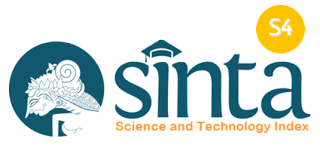IMPROVING STUDENTS’ SPEAKING SKILL THROUGH JIGSAW TYPE COOPERATIVE LEARNING OF CLASS XI IA2 STUDENTS OF SMA N 1 BLAHBATUH
DOI:
https://doi.org/10.36733/jsp.v1i2.476Keywords:
Speaking skill, jigsaw type cooperative learning, pre test, post testAbstract
This study was purposed to improve students’ speaking skill of eleventh grade students of SMA N 1 Blahbatuh. There were 36 students consisting of 18 female students and 18 male students. The study belonged to classroom action research which was conducted to overcome the students’ problem in mastering speaking skill. Moreover, the result of study showed that the Jigsaw Type Cooperative Learning could efficiently improve students’ achievement in speaking skill. This study was applied in two cycles in which each cycle consisted of four interconnected sessions. The required data were collected through three kinds of instruments, namely pre-test (Intial Reflection), post-tests (Reflection) and questionnaires. It was found that the mean figure of IR (Xo) was 40.89. This figure clearly showed that the students’ achievement in speaking skill of the class XI IA2 students of SMA N 1 Blahbatuh was considered low. The scores obtained by the subjects under study in cycle I revealed the progressing mean figures of 41.84, 48.00, 52.72 and 58.39 for S1, S2, S3 and S4. The grand mean of cycle I (XI) was 50.23. the figures gained by the subjects under study in cycle II also showed the succeeding mean figures of 62.22, 66.50, 72.33 and 77.67 for S5, S6, S7 and S8. The grand mean of cycle II (XII) was 69.68. The different between grand mean of cycle I (XI) and grand mean of cycle II (XII) was 19.45. The established mean figure for each session in each cycle was much higher than the IR mean figure. The mean figures from S1 until S8 were progressed and increased significantly. However, this result proved the effectivenenss of Jigsaw Type Cooperative Learning in increasing students’ speaking skill. In addition, the result of the questionnaires showed the comparative percentage figures of 65.52%, 27.62%, 6.84% and 0% for the respective total responses of item A, B, C and D. These findings obviously confirmed that the students’ attitudes, behavior and motivation were changed positively.










